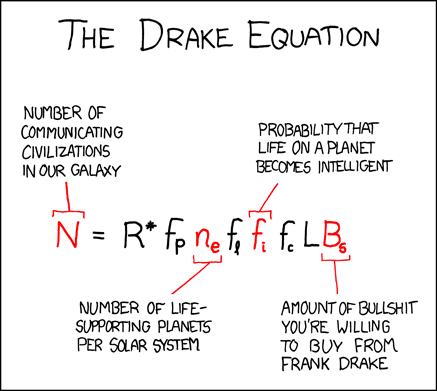First off, "The Drake Equation" doesn't pretend to be an accurate calculation of the number of extra terrestial civilisations out there. If anyone tries to use it that way then it's a missuse. It's simply an equation that if filled out with correct data, vaguely, with focus on the word
vaguely, estimates the number of alien civilisations in our galaxy with similar or exceding technology as us. (note that our galaxy is only one of many billions of galaxies in the Universe)
If used in that sense there's nothing wrong with it, if anything we're the ptoblem because we don't have the data required to complete the equation.
This is roughly how it works:
"N" is the total amount of advanced alien civilisations in our galaxy, that's our "x" in this equation. It's what we're trying to put a number on. To get that number, Drake suggested the following aspects were of the biggest importance (these things are multiplied with each other to determine what "N" is):
R* = the average number of star formation per year in our galaxy
fp = the fraction of those stars that have planets
ne = the average number of planets that can potentially support life per star that has planets
fl = the fraction of the above that actually go on to develop life at some point
fi = the fraction of the above that actually go on to develop intelligent life (civilizations)
fc = the fraction of civilizations that develop a technology that releases detectable signs of their existence into space
L = the length of time for which such civilizations release detectable signals into space
Taken from Wikipedia, http://en.wikipedia.org/wiki/Drake_equation























































































































